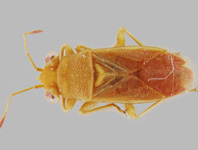Abstract
Exostoma oschanini, presently treated as a junior synonym of Glyptosternon reticulatum, is revalidated within Glyptosternon based on a phylogenetic analysis of the CO1 gene and morphological characters. Glyptosternon oschanini is known to occur in tributaries of the Syr Darya River in Uzbekistan and Kyrgyzstan and may also occur in the Amu Darya River drainage. A morphological diagnosis and description are provided for G. oschanini. Exostoma gracile is a junior synonym of G. oschanini rather than of G. reticulatum.
References
Aljanabi, S.M. & Martinez, I. (1997) Universal and rapid salt-extraction of high quality genomic DNA for PCR-based techniques. Nucleic Acids Research, 25 (22), 4692–4693.
https://doi.org/10.1093/nar/25.22.4692Bandelt, H.J., Forster, P. & Rohl, A. (1999) Median-joining networks for inferring intraspecific phylogenies. Molecular Ecology Notes, 16, 37–48.
https://doi.org/10.1093/oxfordjournals.molbev.a026036Berg, L.S. (1916) Les Poissons des eaux douces de la Russie. Poiss. Eaux Douces Russie, Moscow, xxvii + 563 pp.
Berg, L.S. (1933) Les poissons des eaux douces de l'U.R.S.S. et des pays limitrophes. 3-e Edition, revue et augmentée. Les poissons des eaux douces de l'U.R.S.S., Leningrad, Part 2, 544–903.
Berg, L.S. (1949) Ryby presnych vod SSSR i sopredelnych stran. [Freshwater fishes of the U.S.S.R. and adjacent countries]. Vol. 2. 4th Edition. Opredeliteli po faune SSSR. [Guide to the Fauna of the U.S.S.R.], Moskva, 29, 467–925.
Day, F. (1877) On the fishes of Yarkand. Proceedings of the Zoological Society of London 1876 (Part 4), Art. 2, 781–807.
Gratzianov, V.I. (1907) Opyt' obzora ryby Rossiskoi Imperii v' sistematicheskom' i geograficescom' otnoshenii. [A synoptic essay of the fishes of the Russian Empire.]. Trudy Otdela Ichtiologii Imperatorskago Russkago Obshchestva Akklimatizacii Zivotnych' i Rastenii, 4, i–xxx + 1–567.
Gouy, M., Guindon, S. & Gascuel, O. (2010) SeaView version 4: a multiplatform graphical user interface for sequence alignment and phylogenetic tree building. Molecular Biology and Evolution, 27, 221–224.
https://doi.org/10.1093/molbev/msp259Herzenstein, S.M. (1889) Über einen russischen Wels (Exostoma Oschanini Herz.). Mélanges Biologiques, tirés du Bulletin physico-mathématique de l'Académie Impériale des Sciences de St. Pétersbourg, 13, 69–73.
Hora, S.L. & Silas, E.G. (1952) Notes on fishes in the Indian Museum. XLVII.--Revision of the glyptosternoid fishes of the family Sisoridae, with descriptions of new genera and species. Records of the Indian Museum (Calcutta), 49 (Pt 1, Mar. 1951), 5–29, pl. 1.
Hubbs, C.L. & Lagler, K.F. (1974) Fishes of the Great Lakes Region. University of Michigan Press, Ann Arbor, 213 pp.
Ivanova, N.V., Zemlak, T.S., Hanner, R.H. & Hebert, P.D. (2007) Universal primer cocktails for fish DNA barcoding. Molecular Ecology Notes, 7 (4), 544–548.
https://doi.org/10.1111/j.1471-8286.2007.01748.xKullander, S.O., Fang, F., Delling, B. & Åhlander, E. (1999) The fishes of the Kashmir Valley. In: Nyman, L. (Ed.), River Jhelum, Kashmir Valley. Impacts on the Aquatic Environment. Swedmar, Göteborg, pp. 99–167.
Lanfear, R., Calcott, B., Ho, S. & Guindon, S. (2012) Partitionfinder: combined selection of partitioning schemes and substitutionmodels for phylogenetic analyses. Molecular Biology and Evolution, 29, 1695–1701.
https://doi.org/10.1093/molbev/mss020Leigh, J.W. & Bryant, D. (2015) POPART: full-feature software for haplotype network construction. Methods in Ecology and Evolution, 6, 1110–1116.
https://doi.org/10.1111/2041-210X.12410Librado, P. & Rozas, J. (2009) DnaSP v5: A software for comprehensive analysis of DNA polymorphism data. Bioinformatics, 25, 1451–1452.
https://doi.org/10.1093/bioinformatics/btp187McClelland, J. (1842) On the freshwater fishes collected by William Griffith during his travels from 1835 to 1842. Calcutta Journal of Natural History, Miscellaneous Arts and Sciences in India, 2, 560–589.
Rambaut, A. (2014) FigTree v1.4.2. Available from: http://tree.bio.ed.ac.uk/software/figtree (accessed 23 May 2017)
Rambaut, A., Suchard, M.A. & Drummond, A.J. (2013) Tracer v1.6. Available from: http://tree.bio.ed.ac.uk/software/tracer/ (accessed 23 May 2017)
Regan, C.T. (1905) A synopsis of the species of the silurid genera Parexostoma, Chimarrhichthys and Exostoma. Annals and Magazine of Natural History (Series 7), 15, 182–185.
Rendahl, H. & Vestergren, G. (1941) Eine neue Art der Gattung Glyptosternon s. str. aus dem nordöstlichen Birma. Zoologischer Anzeiger, 133 (No 9/10), 213–214.
Ronquist, F. & Huelsenbeck, J.P. (2003) MrBayes 3: Bayesian phylogenetic inference under mixed models. Bioinformatics, 19, 1572–1574.
https://doi.org/10.1093/bioinformatics/btg180Tamura, K., Stecher, G., Peterson, D., Filipski, A. & Kumar, S. (2013) MEGA6: molecular evolutionary genetics analysis version 6.0. Molecular Biology and Evolution, 30, 2725–2729.
https://doi.org/10.1093/molbev/mst197Thoni, R.J. & Gurung, D.B. (2014) Parachiloglanis bhutanensis, a new species of torrent catfish (Siluriformes: Sisoridae) from Bhutan. Zootaxa, 3869 (3), 306–331.
https://doi.org/10.11646/zootaxa.3869.3.5

